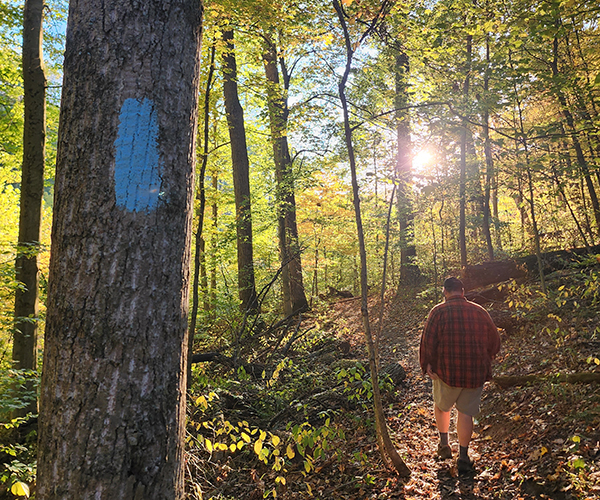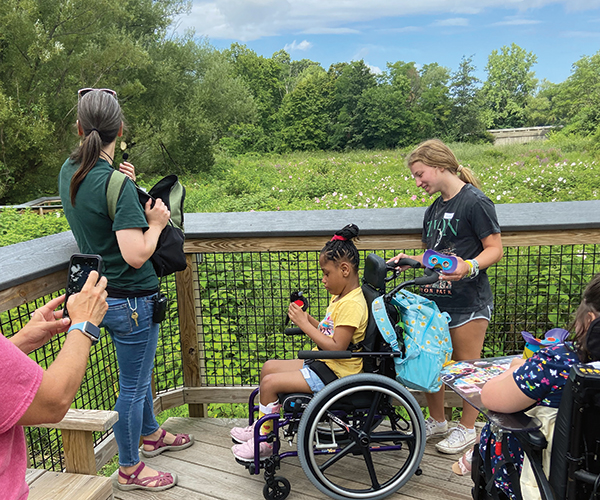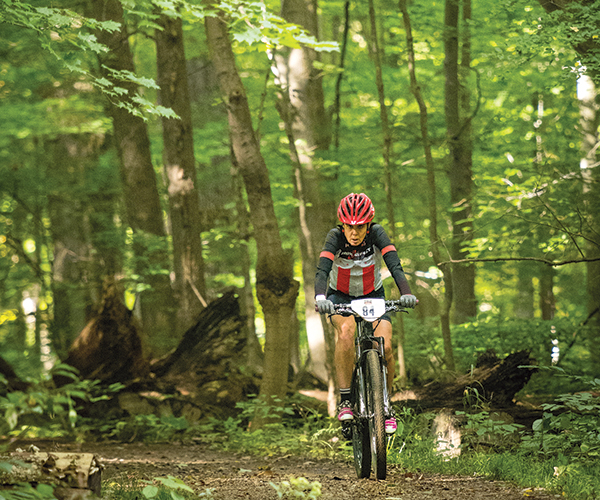He peppers his answers with inhuman asides: There's the "durrr, durrr, durrr" of the green frog. The "vrooom, vrooom" of the bullfrog. You get the impression he'd sing to the cottonwood trees if only he knew their song.
Gerrone explains that Northeast Ohio was all forest filled with marshes, ponds, streams and swamps until about 250 years ago. Our region's low-lying flatlands and mucky soil meet the ideal conditions for wetlands to thrive. When it rains, the soil holds the water until consecutive sunny days dry it up. Some of the wetland areas at the Carlisle Reservation stay soggy all year. Others have just a few inches of water and will disappear and reappear as seasons change.
Once settlers arrived, much of the state's wetlands were turned to farmland. Although you'd be hard-pressed to envision farmland where Gerrone is standing today, the wetlands at the Carlisle Reservation were born of restoration efforts.
The second-growth marsh looks like a miniature version of Yoda's swampy home planet of Degobah. Trees grow out of standing water, and insects buzz from end to end. Sunlight riffles through the tree cover. It's beautiful and — with the four crucial elements of food, water, shelter and space — it's vital to the ecosystem.
Insects and birds stop here during their migrations. Plus, "breeding is so important here," Gerrone says. "Take a look at the insect life. The frogs that you hear, without this, they're not here. And if they're not here, whatever feeds upon them is not here."
Frogs and salamanders must lay their eggs in these marshy regions. In spring, you'll see them, pearl-like strings drifting on the water. In the heat of summer, you can hunt for tadpoles. Gerrone catches some that are just starting to look like frogs; with long tails and stunted limbs, it's hard to say exactly what they are at the moment.
But Gerrone is quick to point out that every day is a good day to explore wetlands, and he should know. The Lorain County Metro Parks system is a leader in wetland mitigation and rebuilding; where other parks have reworked hundreds of acres, they've done thousands.
"I have more appreciation for wetlands in winter than any other time of year," Gerrone says. "It's not dead. What's stored here is some of the most incredible potential, and as I bundle up for the winter season, this survives it without a problem."



